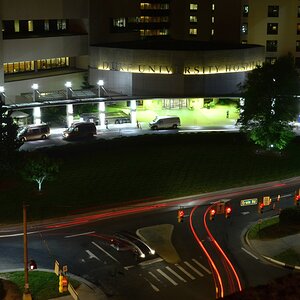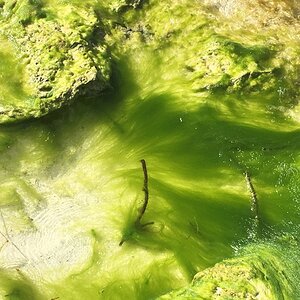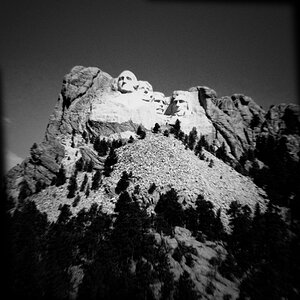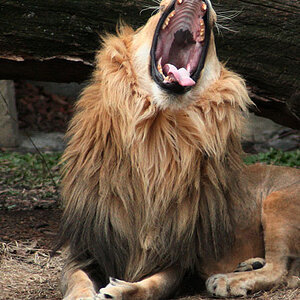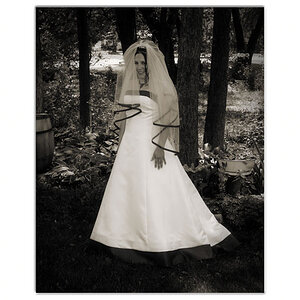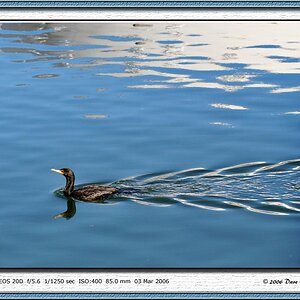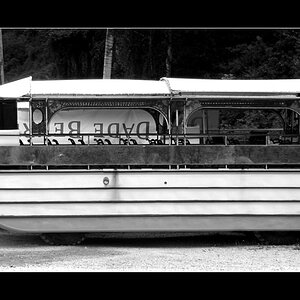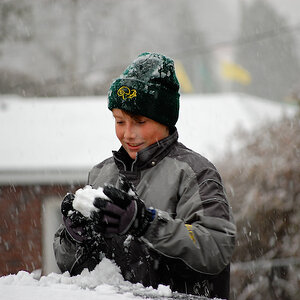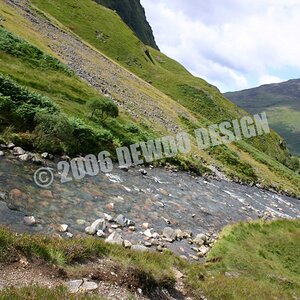vintagesnaps
Been spending a lot of time on here!
- Joined
- Jan 13, 2013
- Messages
- 9,119
- Reaction score
- 3,109
- Location
- US
- Can others edit my Photos
- Photos NOT OK to edit
I would suggest a class, workshop, camera club, anywhere you can get some experience in the darkroom to see how well you like it - if you love it you'll probably know it, I could spend hours in a darkroom and lose track of if it's still light out (if you're in the dark glow of a safelight long enough I think it's like your own little world!).
I love to print, but try it and see if you like it. For me, a bit of a miss was pottery - I like it, and might do a workshop or something again someday - but I am not that good at throwing a pot on the wheel. Didn't love it enough to want to stay with it. But it was a fun experience, just not my thing enough to be a hobby. I wouldn't want to get into all the equipment and expense and then find out you don't like it enough to stay with it.
I used to use a shared darkroom at a local university but the building got remodeled and that was that. In the summer I had the place to myself (while the pottery studio below was always busy! lol) I don't find it that hard once you learn it, or that time consuming compared to the amount of time some people seem to be spending post processing digitally. But it takes learning proper techniques (or probably finding out the hard way what not to do!). And does involve a certain amount of set up and clean up.
And it helps to get proper exposures to have negatives that aren't too dense and definitely not too thin, then once I get exposure time determined I can usually crank out prints pretty efficiently. I learned from a local camera shop owner who since retired and closed up shop (where I bought my first camera) to start with either f8 and 11 sec. (or f11 and 8 sec.) and that works almost all the time for me as a starting point. (I guess old photographers' tales actually can work!)
Try Large Format Photography Forum . I don't get on much but there is darkroom discussion and some I think doing 4x5.
Also look up Mat Marrash (yes one T in Mat), he does large format, view cameras, etc. He's on the FPP podcasts which I'm way behind on listening to so am not up on what they have going on. But look him up, he has his own website etc.
Film Photography Project An Internet Radio Show On-Line Resource for Film Shooters Worldwide
(And yes, you could take a class and get a camera to start with and send film out, then go from there. You don't have to process/print/scan everything yourself, sometimes I get film developed and scanned, usually did that to be able to go thru negs on my lightbox at home since my time was limited in the darkroom. As you go along you'll probably figure out what works best for you.)
I love to print, but try it and see if you like it. For me, a bit of a miss was pottery - I like it, and might do a workshop or something again someday - but I am not that good at throwing a pot on the wheel. Didn't love it enough to want to stay with it. But it was a fun experience, just not my thing enough to be a hobby. I wouldn't want to get into all the equipment and expense and then find out you don't like it enough to stay with it.
I used to use a shared darkroom at a local university but the building got remodeled and that was that. In the summer I had the place to myself (while the pottery studio below was always busy! lol) I don't find it that hard once you learn it, or that time consuming compared to the amount of time some people seem to be spending post processing digitally. But it takes learning proper techniques (or probably finding out the hard way what not to do!). And does involve a certain amount of set up and clean up.
And it helps to get proper exposures to have negatives that aren't too dense and definitely not too thin, then once I get exposure time determined I can usually crank out prints pretty efficiently. I learned from a local camera shop owner who since retired and closed up shop (where I bought my first camera) to start with either f8 and 11 sec. (or f11 and 8 sec.) and that works almost all the time for me as a starting point. (I guess old photographers' tales actually can work!)
Try Large Format Photography Forum . I don't get on much but there is darkroom discussion and some I think doing 4x5.
Also look up Mat Marrash (yes one T in Mat), he does large format, view cameras, etc. He's on the FPP podcasts which I'm way behind on listening to so am not up on what they have going on. But look him up, he has his own website etc.
Film Photography Project An Internet Radio Show On-Line Resource for Film Shooters Worldwide
(And yes, you could take a class and get a camera to start with and send film out, then go from there. You don't have to process/print/scan everything yourself, sometimes I get film developed and scanned, usually did that to be able to go thru negs on my lightbox at home since my time was limited in the darkroom. As you go along you'll probably figure out what works best for you.)
Last edited:


